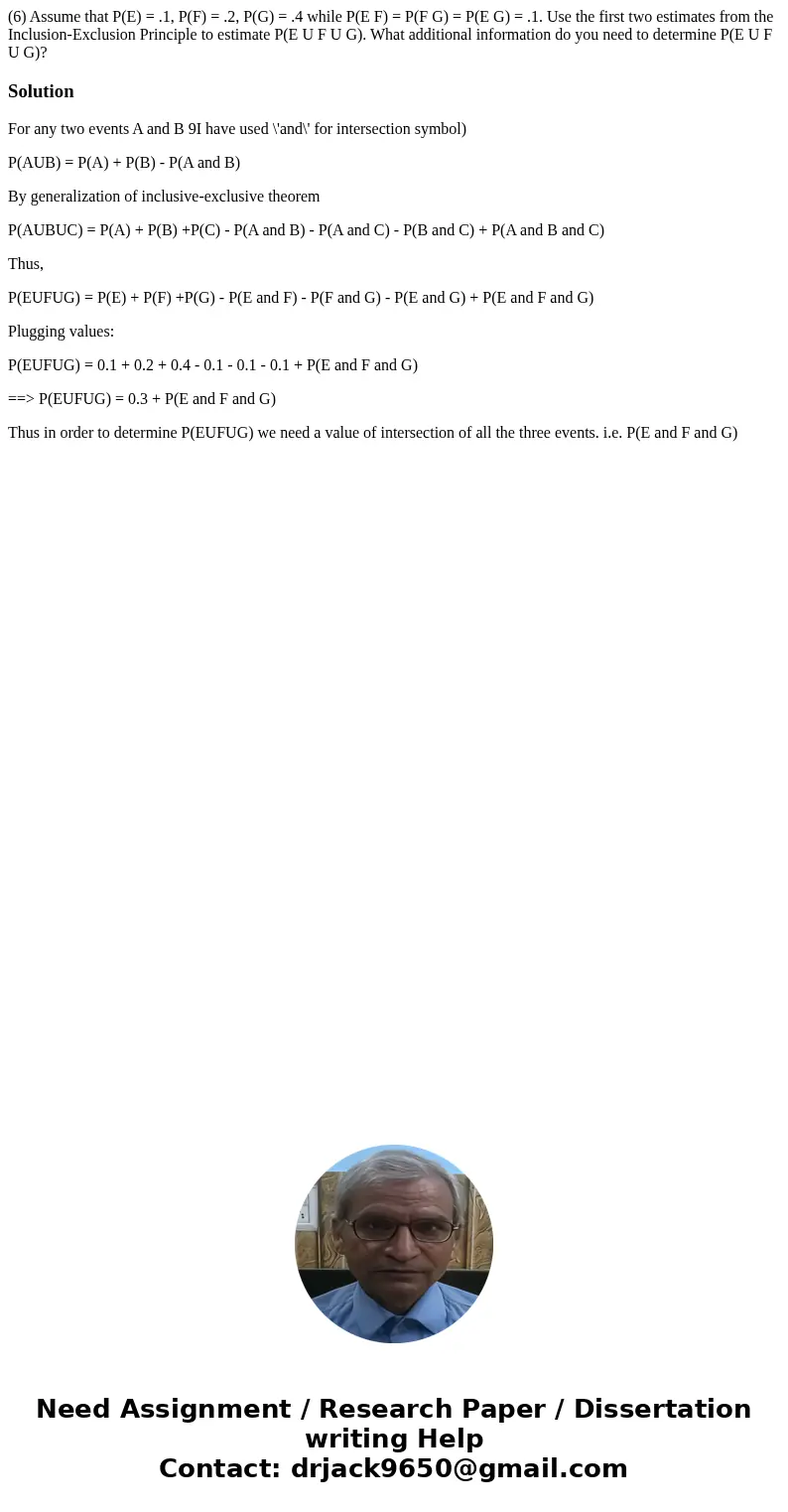6 Assume that PE 1 PF 2 PG 4 while PE F PF G PE G 1 Us
(6) Assume that P(E) = .1, P(F) = .2, P(G) = .4 while P(E F) = P(F G) = P(E G) = .1. Use the first two estimates from the Inclusion-Exclusion Principle to estimate P(E U F U G). What additional information do you need to determine P(E U F U G)? 
Solution
For any two events A and B 9I have used \'and\' for intersection symbol)
P(AUB) = P(A) + P(B) - P(A and B)
By generalization of inclusive-exclusive theorem
P(AUBUC) = P(A) + P(B) +P(C) - P(A and B) - P(A and C) - P(B and C) + P(A and B and C)
Thus,
P(EUFUG) = P(E) + P(F) +P(G) - P(E and F) - P(F and G) - P(E and G) + P(E and F and G)
Plugging values:
P(EUFUG) = 0.1 + 0.2 + 0.4 - 0.1 - 0.1 - 0.1 + P(E and F and G)
==> P(EUFUG) = 0.3 + P(E and F and G)
Thus in order to determine P(EUFUG) we need a value of intersection of all the three events. i.e. P(E and F and G)

 Homework Sourse
Homework Sourse